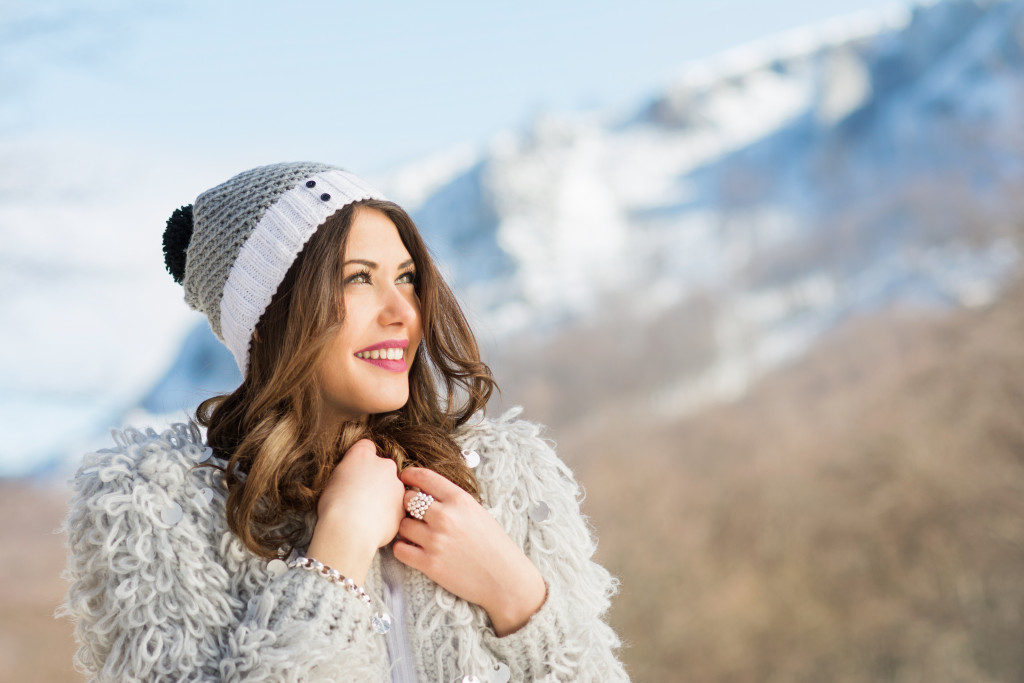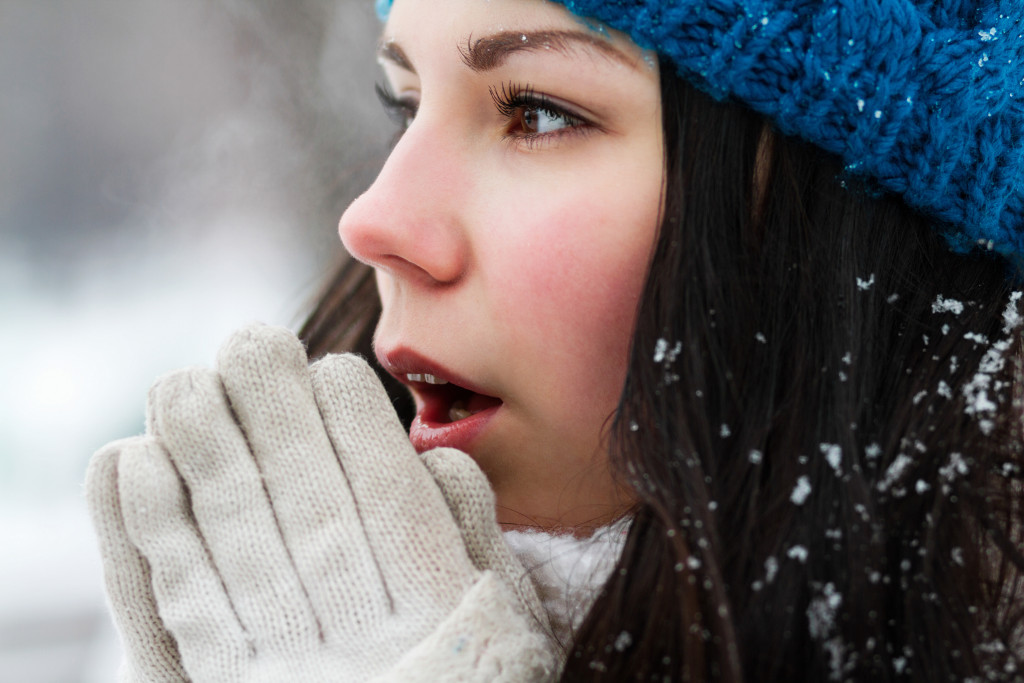- Balance fashion, functionality, and health to stay warm and healthy in cold countries with trendy winter essentials.
- Invest in moisture-wicking fabrics like wool, nylon, and fleece for optimal warmth and comfort levels.
- Accessorize with waterproof gloves, beanies, scarves, and socks for protection against the elements.
- Ensure your skincare routine includes moisturizers to counteract dry air and windy conditions.
- Incorporate activities to boost mental health, such as light therapy or spending time with loved ones during colder months.
Living in a cold country can be challenging, especially when staying healthy and stylish as the temperature drops. Cold weather affects our physical and mental health, and balancing fashion, functionality, and well-being is essential.
Cold weather profoundly affects our physical health. The immune systems are more susceptible to illnesses and are at higher risk of cold-related conditions such as hypothermia and frostbite. Additionally, seasonal affective disorder (SAD) is a type of depression that occurs during colder months due to less daylight exposure.
Prioritizing your health during winter is crucial to avoid falling ill or experiencing negative emotions.
This blog post will explore the intersection of fashion, function, and well-being in cold climates. We will discuss trendy winter essentials for cold countries and layering techniques that combine style and warmth effectively.
Fashionable Winter Essentials for Cold Countries
To stay stylish even in the coldest weather, there are several must-have essentials that every fashion-savvy individual should have. These include:
Layering Techniques
Layering is essential in cold countries because it helps to trap warmth, regulates body temperature, and adds depth to your outfit. But layering doesn’t have to be boring or bulky—it can be chic and stylish too.
You can start by layering light and breathable fabrics such as cotton and silk and adding more substantial items such as a cardigan and jacket to keep you warm. For instance, pair a cozy sweater with a denim jacket, wear a cardigan over a plaid shirt, or opt for a faux fur vest over a long-sleeved shirt.
Trendy Outerwear Options
It’s time to ditch the old winter coat and upgrade your outerwear collection. Winter coats and jackets can be both practical and stylish. You want a coat, jacket, or gilet that keeps you warm and fits your body type and style preference.
Another ideal choice is a puffer jacket which has transitioned from purely functional to fashionable. The best part is that you can get one in any length, color, or print to make a statement.
Finally, a cozy down gilet for women and men could be your perfect choice if you like a sporty look. You can wear it over a long-sleeved tee or shirt and pair them with jeans and boots.
Accessorizing for Style and Comfort
Accessories are essential in any outfit, but during winter, they become necessities. The type of accessories you choose depends on the activities you’ll be doing. For instance, if you plan to be in the snow, you’ll want waterproof, moisture-wicking, and breathable accessories.
You can opt for a woolen beanie, ski gloves, warm socks, and a scarf in bright colors for visibility. If you’re a fan of classic pieces, black leather gloves would be ideal, or you could add interest to your outfit with animal-print fabrics.

Prioritizing Functionality in Cold-Weather Fashion
Dressing up for the cold should be about finding the perfect intersection of fashion and functionality. While a coat or jacket may look great, it cannot guarantee comfort or warmth unless it fits correctly and has a suitable material.
Fabrics and Materials Suitable for Cold Climates
Moisture-wicking clothes and breathable materials are perfect for dry seasons and cold conditions. They help regulate your body temperature and wick sweat away from your skin. They help prevent hypothermia, which could develop due to wet clothes.
Breathable fabrics, in particular, help release moisture, which prevents bacteria and odors from building up in your clothes. Wool, nylon, and fleece are also ideal materials that keep you warm and dry in cold weather.
Smart Clothing Technology
Innovative clothing technology is becoming more popular in winter clothing as designers focus on creating garments with advanced functions beyond warmth and insulation. Wearable tech that integrates with your gadgets and devices can also help enhance your comfort and functionality.
For example, you can find jackets with built-in heating systems or gloves with touch-screen tips so you can use your phone without taking them off.
Choosing Footwear for Icy and Snowy Conditions
Selecting shoes that are both functional and stylish can be challenging. However, it is essential to prioritize safety, especially when ice and snow are prevalent in cold countries. Look for footwear that provides superior traction and support and is waterproof.
Ski boots, hiking boots, and snow boots are highly recommended to provide excellent comfort and protection from the elements.
Maintaining Health and Well-Being in Cold Countries
Maintaining your health while living in cold weather is essential apart from the wardrobe. The dry air, wind, and freezing temperatures can cause adverse effects on the skin and body. Here are some healthy tips for living in a cold country.
Skincare Tips for Cold Weather
Harsh conditions like cold in winter can leave your skin dry, rough, and damaged. Ensure your skincare routine includes moisturizers and creams that lock in moisture and protect your skin. Stay hydrated and drink enough water to avoid dehydration.
Also, your skin benefits from drinking water, and keeping yourself hydrated significantly impacts your overall health.
Nutrition and Hydration
In addition to water, it’s crucial to have a balanced diet that includes protein for strength and vitamins to boost your immune system. Moreover, foods rich in fatty acids and antioxidants can reduce inflammation.
Don’t forget to pack lean meats, whole grains, and fruits and vegetables to keep you full and provide the necessary nutrients to keep you healthy during the cold winter.
Mental Well-Being
Seasonal Affective Disorder (SAD) is a type of depression during winter. It is essential to take care of your mental health during this time. Some strategies include light therapy, exercise, spending time with loved ones, meditation, and soaking up as much sunlight as possible.
These small activities can lift your spirits and improve your overall well-being.

Living in a cold climate can be challenging, but following these tips and tricks can make a huge difference in staying healthy and fashionable. Prioritizing functionality in your wardrobe, selecting materials suitable for colder climates, and integrating wearable technology are just a few examples of how technology is improving winter fashion.
Taking care of your physical and mental well-being in the cold is vital, so pay attention to your skincare routine, diet, and mental health care. By putting health and style at the forefront of your winter wardrobe and lifestyle, you can ensure comfort and confidence —whether you’re navigating icy sidewalks or relaxing by the fireplace.

